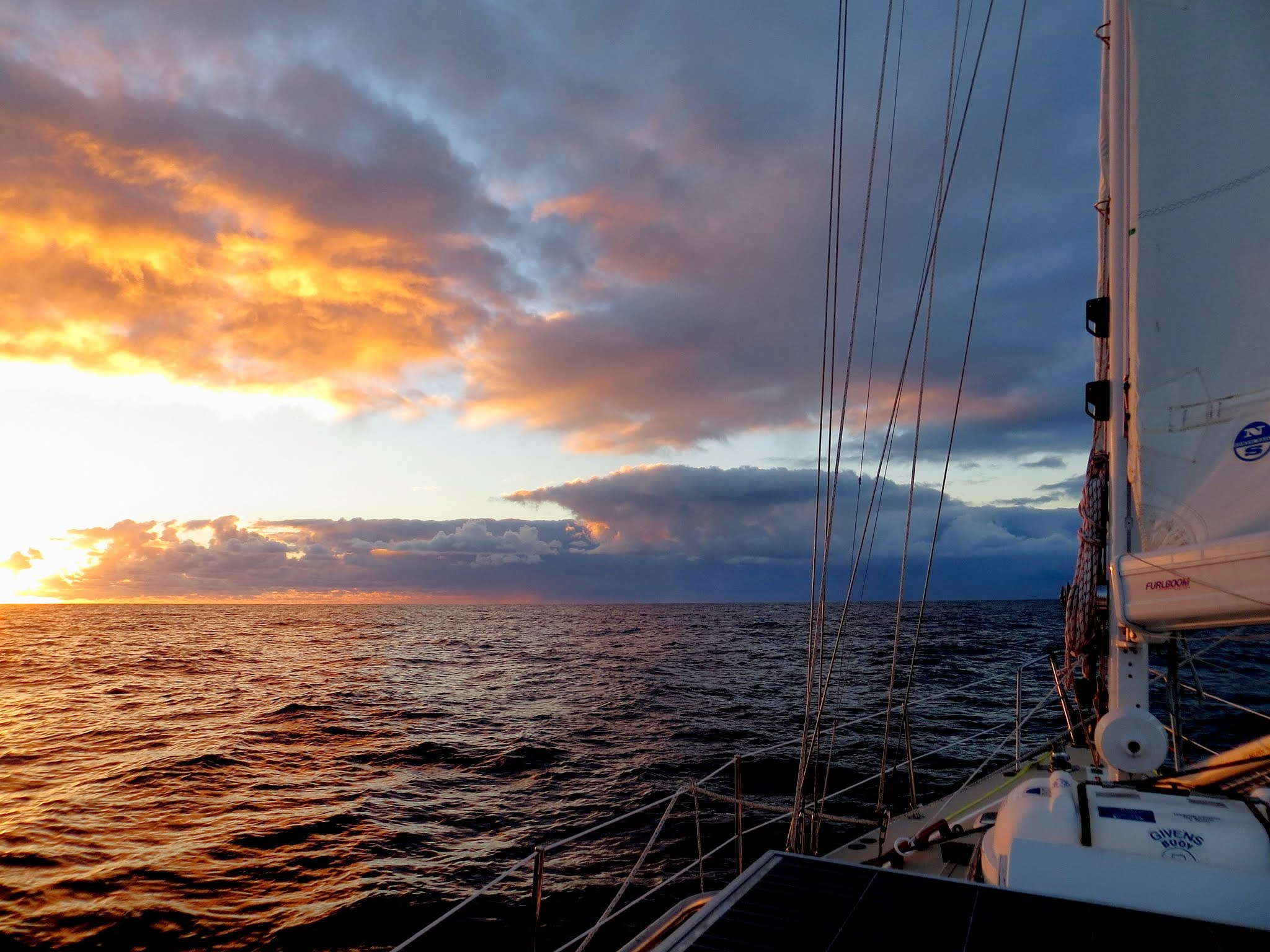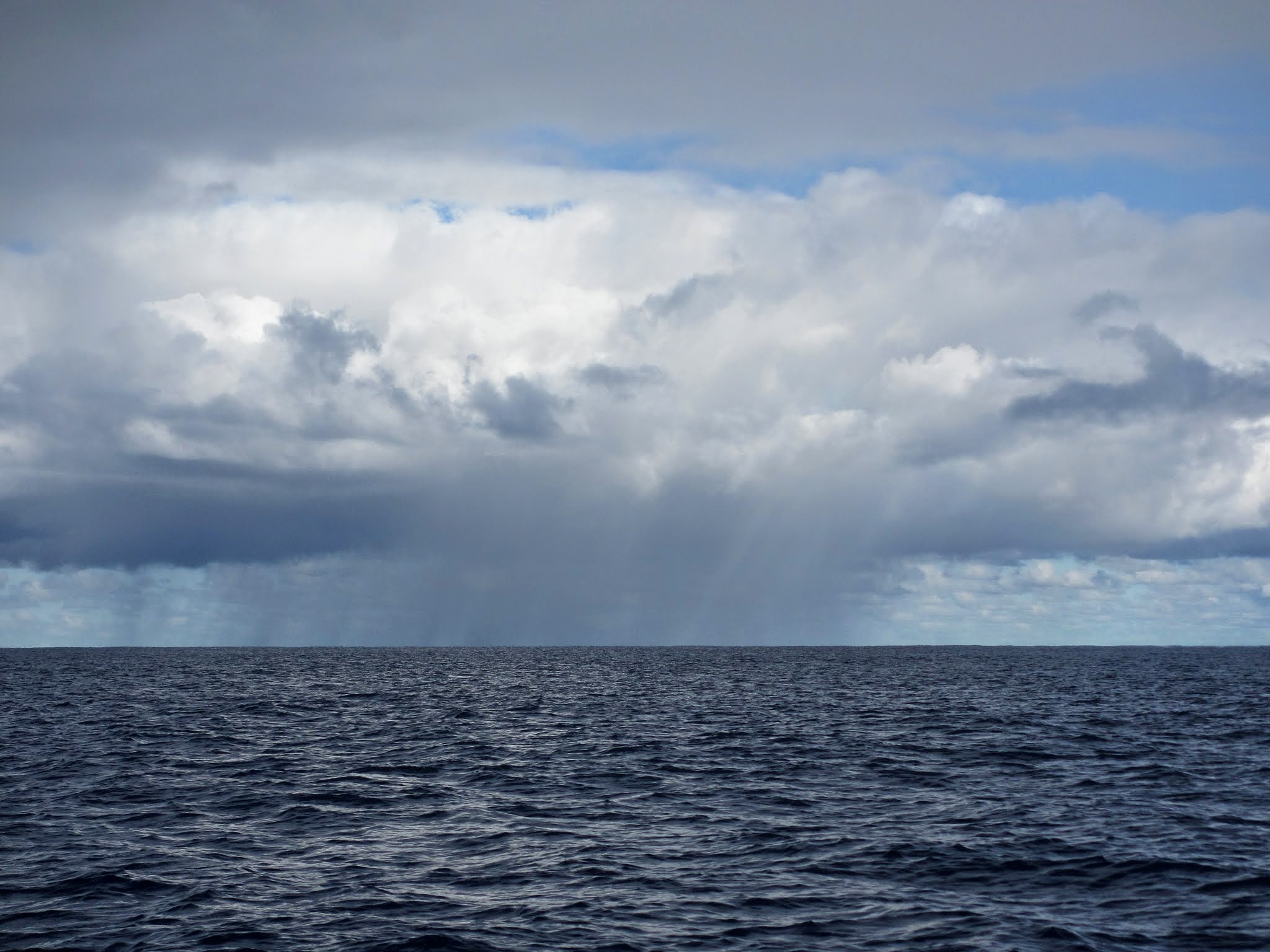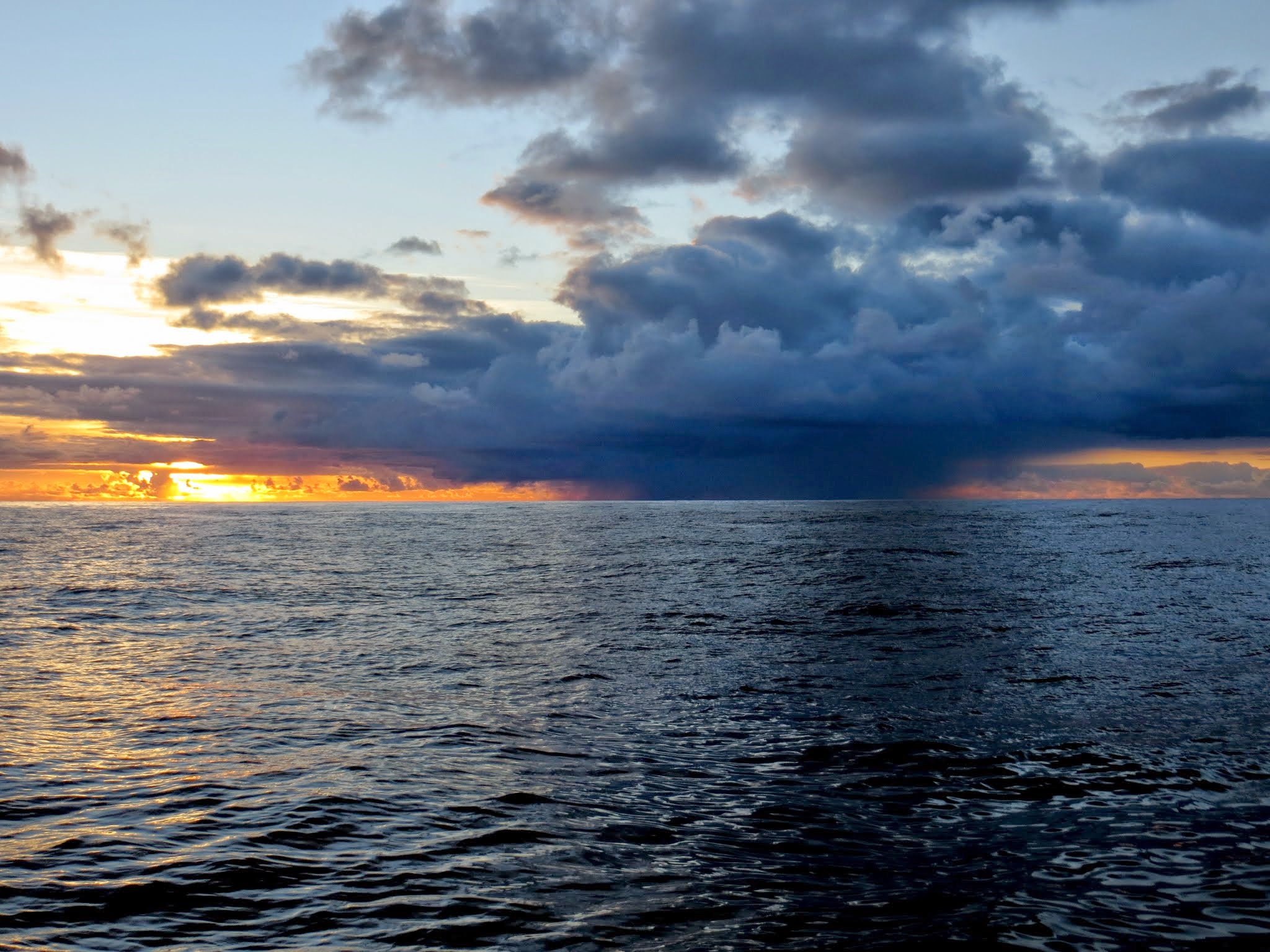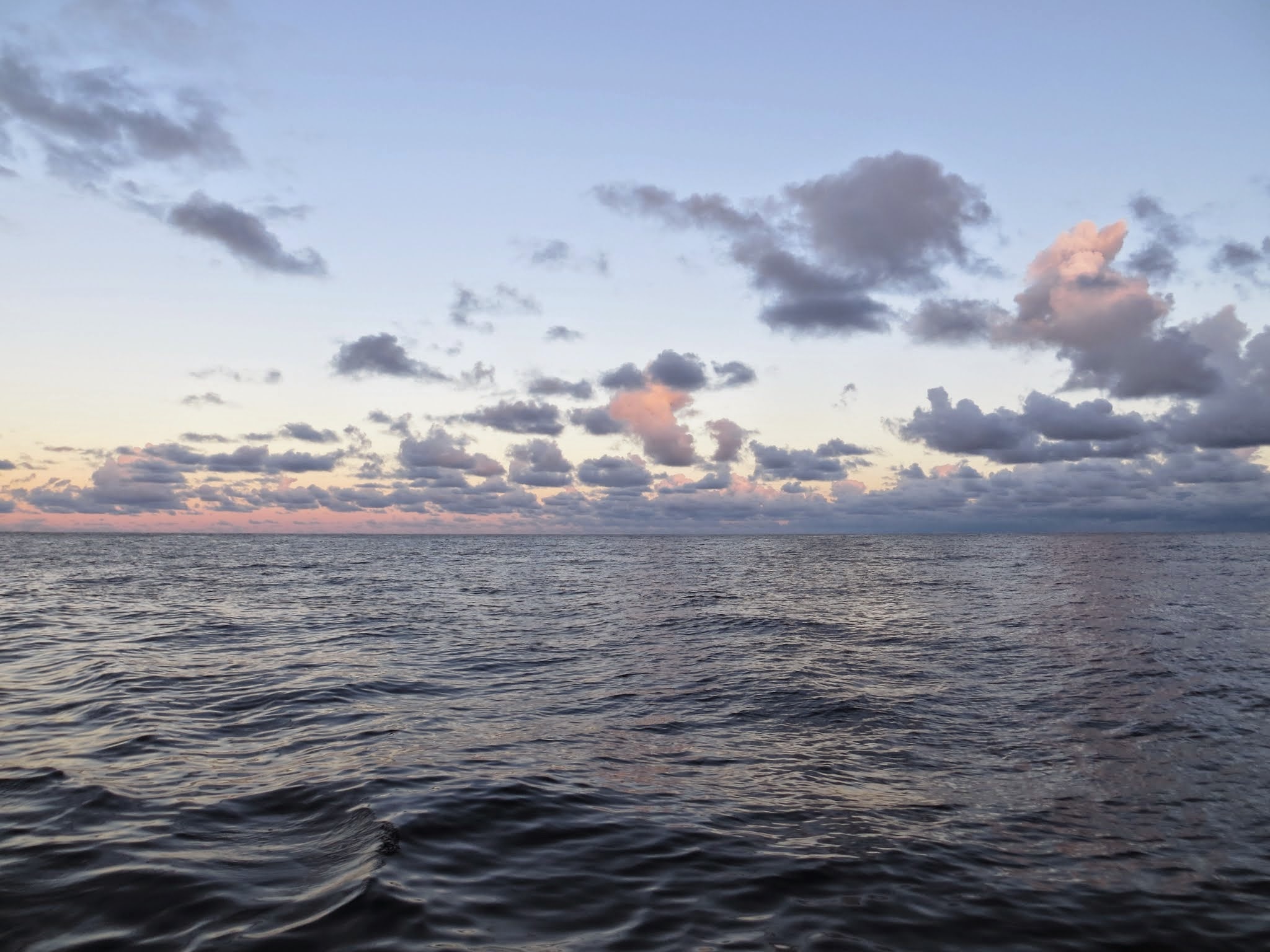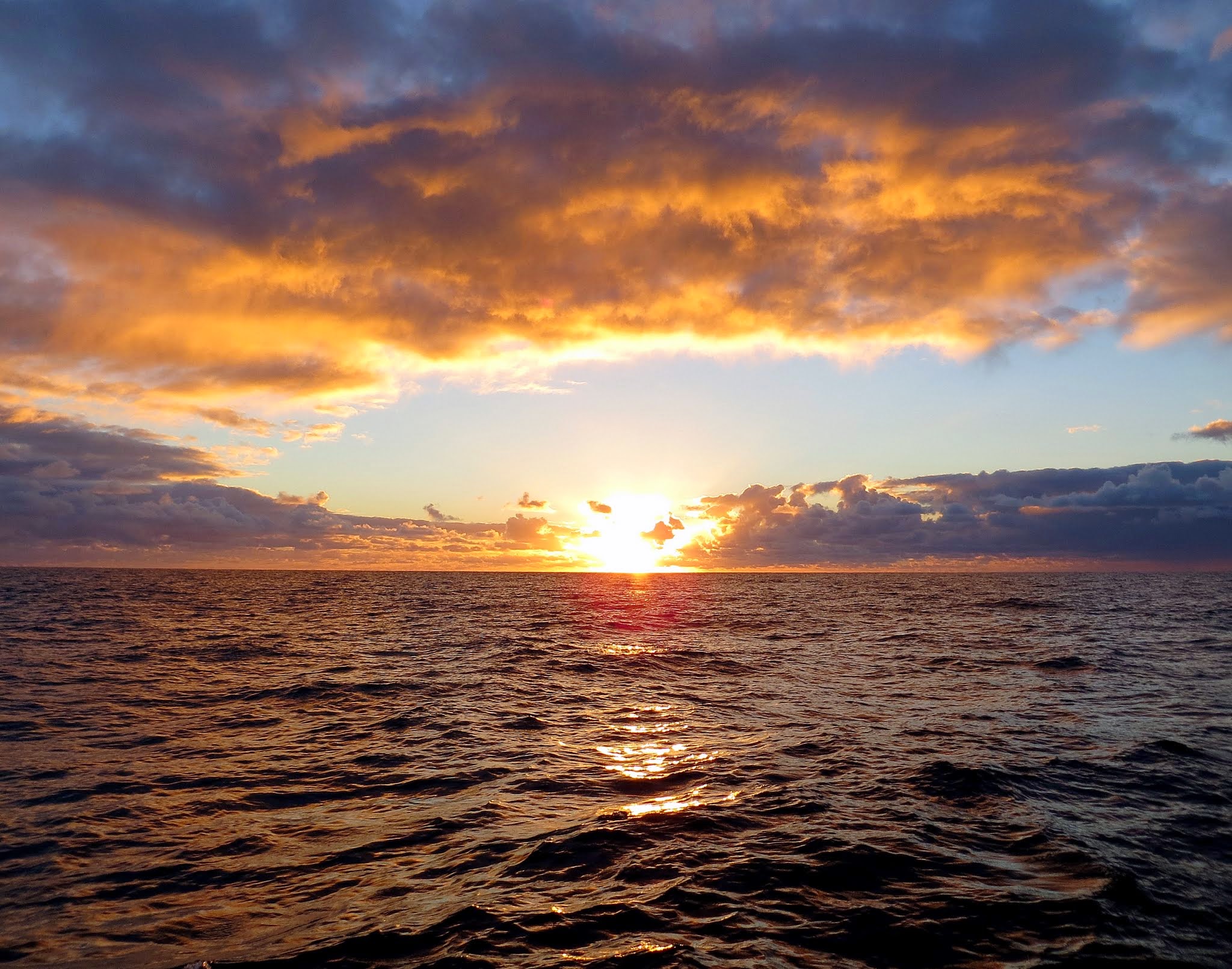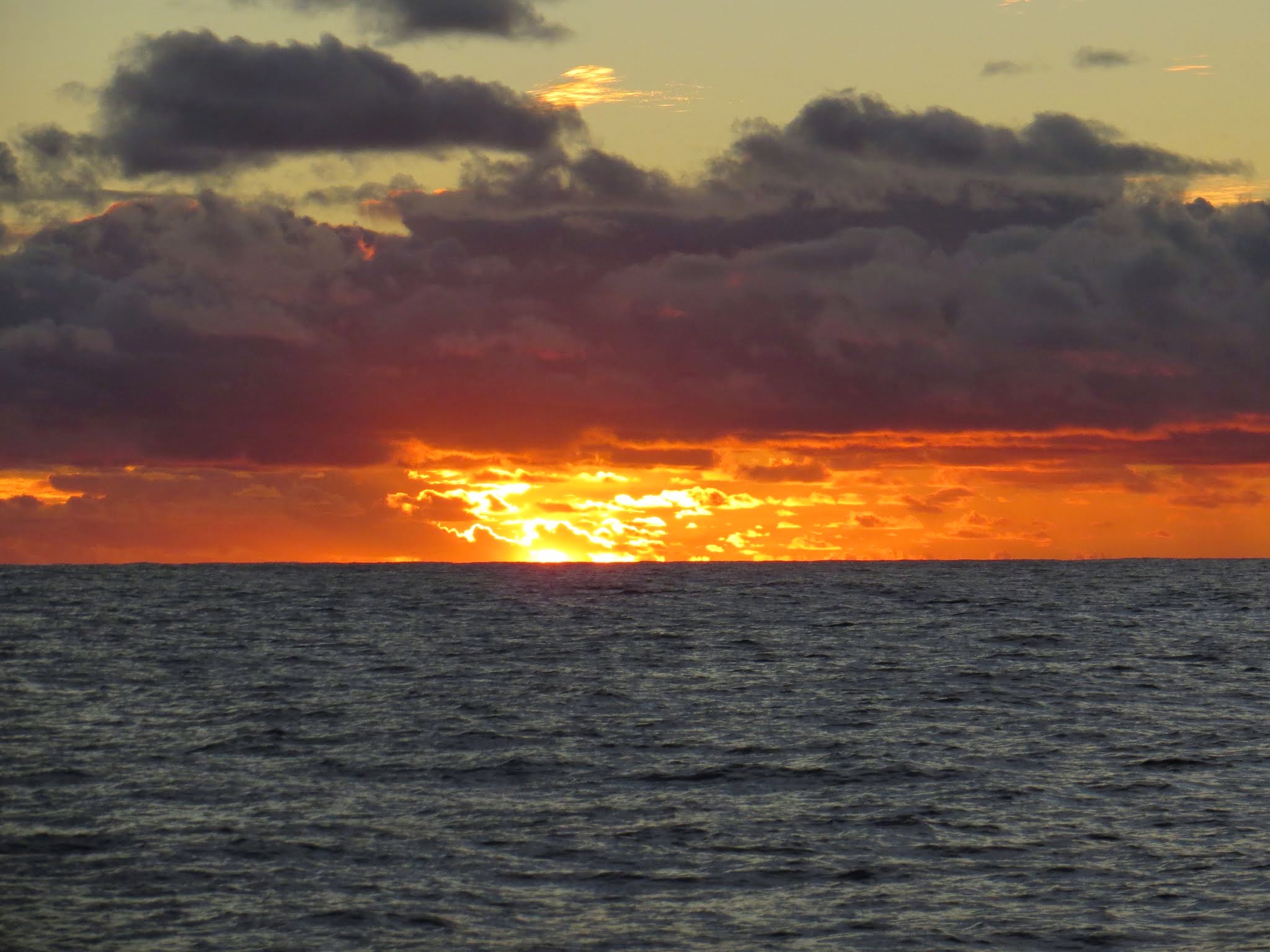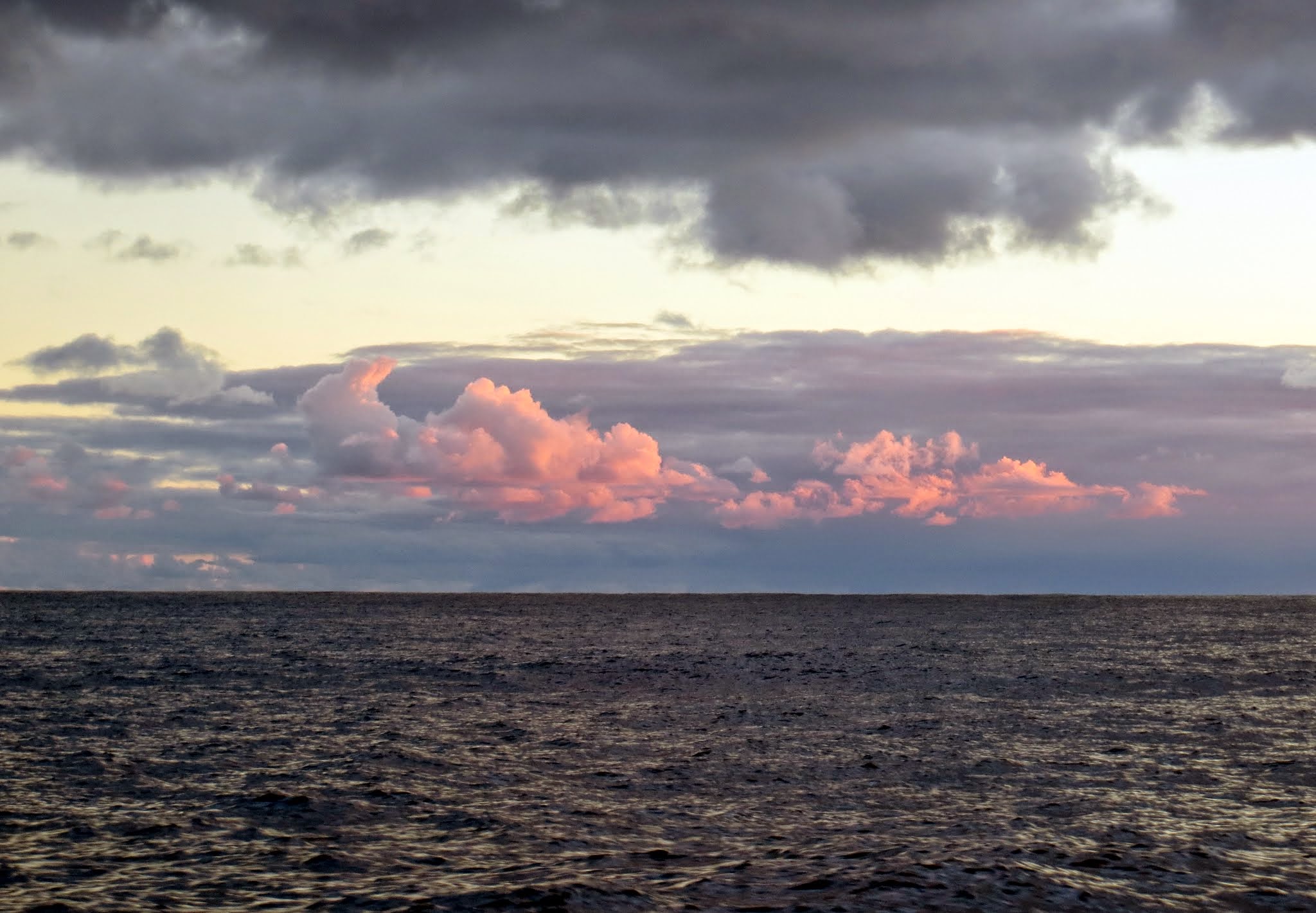May 29 – June 10, 2013
The first three days of our passage went well. We had some squalls but nothing very dramatic, and each day brought warmer temperatures. There was some concern about possible wind on the nose in a couple of days, but for now it looked good and we looked forward to warmer, nicer conditions in our immediate future.
On the morning of June 1, I woke up to rough seas and 17- to 22-knot winds. WTF is this? It was supposed to be nice today, and this wasn’t nice. It was squally and cloudy and windy and very rolly. I grumpily waited for the rough conditions to let up, but they weren’t easing and in fact seemed to be getting worse. Late in the afternoon, Rich picked up an e-mail from our weather router, Bob McDavitt, saying GO WEST NOW!!! He added that we needed to get out of there as we were heading into a nasty squash zone. The e-mail was now six hours old. Alarmed, Rich picked up the sat phone and called him, asking if we should now head southwest. “No, it was OK, just go west immediately!” he said.
And so we turned west. We would lose the easting advantage we had by leaving from Tauranga, but we didn’t care; we just wanted to avoid the nasty weather. As it turned out, we still had an advantage leaving from Tauranga. All the boats who had taken off north of us were caught in that squash zone, many of them hove to in winds ranging from 40 to 60 knots. We were able to skirt along just underneath the zone in 24-knot winds. It helped that by turning west we now had the winds on a broad reach, a much more comfortable direction. Not that it was comfortable, not at all. The seas were vicious with waves slamming and crashing over the boat, and because I hadn’t put on a fresh scopolamine patch I got seasick. No fun.
In spite of this bad weather, it was still getting warmer.
I will refer back to something I mentioned a few blog posts ago about having two weather routers, Bob McDavitt and Commander’s. Bob sent us an urgent e-mail as soon as this situation became apparent. Commander’s never even bothered to warn us. Plus we were thrilled to find out we could, in fact, call Bob and ask for clarification about what to do. (Being able to pick up the phone and call was why we tried Commander’s in the first place). This is why, in the future, we will stay with Bob McDavitt. Sometimes these things can’t be forecast; and if you can’t anticipate something, you can at least react quickly. With Bob McDavitt, we were able to do that and stay out some really nasty conditions.
On June 2, the seas were still rough, winds 25 to 30 knots, but we were able to turn north and resume a course to Fiji. Even though it was a bit windier, the seas were calmer and not crashing over the boat so much. It was down to 20 knots by the end of the day, and the morning of June 3 we finally got some nice weather: warm, sunny, light southerly winds and sailing on a broad reach. The swells were 2 to 3 meters but they had a long period between them and were not unpleasant. Unfortunately, we had to enjoy these nicer conditions while they lasted because we had another bout of rough weather ahead.
The rough weather showed up right on schedule on June 4. Once again the wind blew 25 to 30 knots and the seas slammed over the boat. It was about as rough as we’ve ever seen it. The wind died down some as the day went on, but then we got some nasty squalls and the wind would pick up again as the squalls passed over us. The highest wind we saw on this entire passage was 31 knots, and that was in one of the squalls. I think we can count ourselves very lucky that it was never worse than this!
On June 5 it was still really rough, with winds 20 to 25 knots, big confused seas, and squalls. Legacy was getting tossed around and water smashed over us, sometimes alarmingly. I felt safe inside, but it was disheartening—when was this going to get better? It tuned out we were in a series of squalls, and by the time I woke up for my night watch it had calmed down considerably and we were having a much nicer ride. We’d been listening to the Drifter’s Net and everyone out here had been having a rough time. As bad as our conditions had been, it had been worse for everyone else. We knew we’d been lucky to avoid the worst of it, but we didn’t feel lucky: we felt like two very tired souls.
Ah, June 6 arrived with lovely conditions! The sun came out and we sailed on a broad reach in 12- to 15-knot winds and made good speed. There was a rolling swell that was big but gentle, hard to cook but otherwise comfortable. It was even nicer on the 7th, the big swells now rolling up from behind us and giving us a great ride as they’d pass under us. We were still sailing on a broad reach with enough wind to keep our sails full. This was dream sailing, and it was even pleasantly warm! Beautiful conditions like this go a long way towards helping us get over the beating we take in the rougher conditions.
On the 8th and 9th, we continued towards Fiji on a warm tradewind breeze and big swells that came up from behind us to pushed us along. It was really lovely, the air warm but not hot. We started to pass islands; places we didn’t know anything about but knew we might be visiting in the future. For now we were only focused on getting to Savusavu on Vanua Levu, Fiji’s big north island. This seemed to be the preferred place to check in with a nice town and good facilities for cruisers. We were a little concerned about getting a mooring because boats from two different rallies (ARC and Oyster) were arriving around this time. We had e-mailed Waitui Marina and asked to reserve a mooring but hadn’t heard back yet because it was Sunday. We were on schedule to arrive the next morning along with a few other boats as everyone tries to time their arrival for a weekday. Hopefully there would be enough room for everyone. (There was – more to come.)
Above is a gallery of photos from our passage showing sunsets, sunrises, and some squalls. We didn’t take any photos of the nasty weather. As always click to enlarge and scroll, or just pass the cursor over the pictures. –Cyndi

